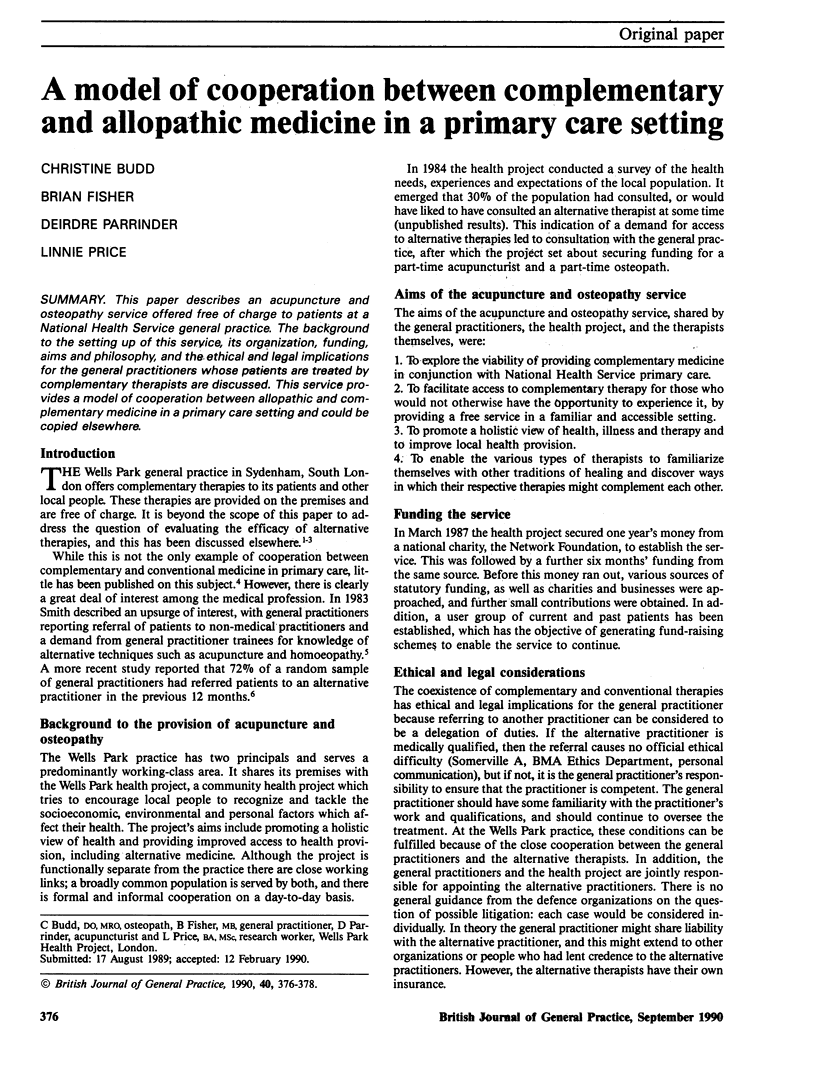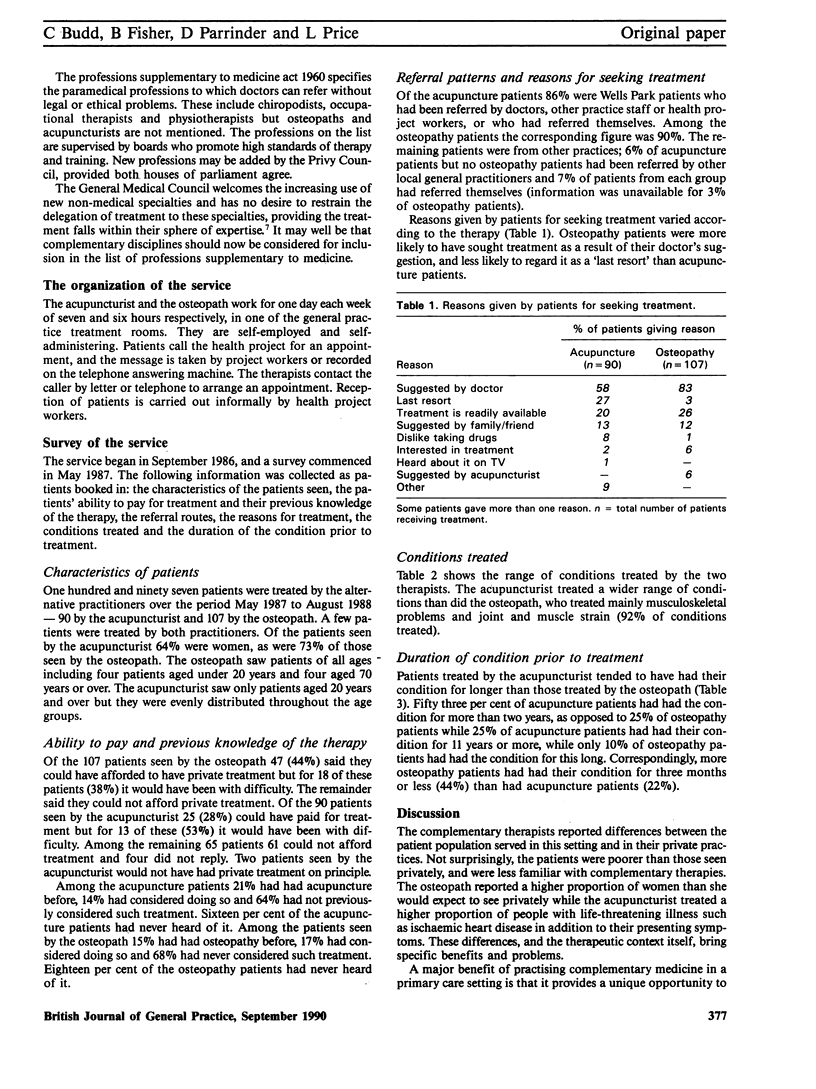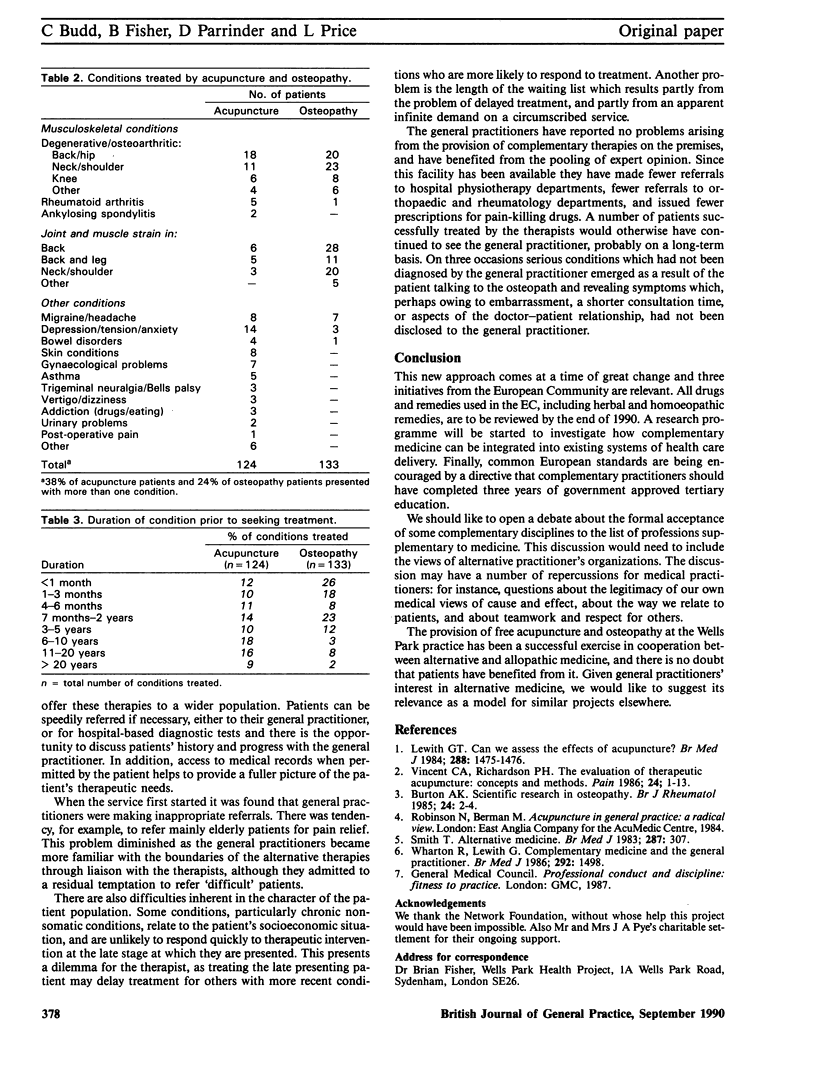Abstract
This paper describes an acupuncture and osteopathy service offered free of charge to patients at a National Health Service general practice. The background to the setting up of this service, its organization, funding, aims and philosophy, and the ethical and legal implications for the general practitioners whose patients are treated by complementary therapists are discussed. This service provides a model of cooperation between allopathic and complementary medicine in a primary care setting and could be copied elsewhere.
Full text
PDF


Selected References
These references are in PubMed. This may not be the complete list of references from this article.
- Burton A. K. Scientific research in osteopathy. Br J Rheumatol. 1985 Feb;24(1):2–4. doi: 10.1093/rheumatology/24.1.2. [DOI] [PubMed] [Google Scholar]
- Lewith G. T. Can we assess the effects of acupuncture? Br Med J (Clin Res Ed) 1984 May 19;288(6429):1475–1476. doi: 10.1136/bmj.288.6429.1475. [DOI] [PMC free article] [PubMed] [Google Scholar]
- Smith T. Alternative medicine. Br Med J (Clin Res Ed) 1983 Jul 30;287(6388):307–308. doi: 10.1136/bmj.287.6388.307. [DOI] [PMC free article] [PubMed] [Google Scholar]
- Vincent C. A., Richardson P. H. The evaluation of therapeutic acupuncture: concepts and methods. Pain. 1986 Jan;24(1):1–13. doi: 10.1016/0304-3959(86)90022-9. [DOI] [PubMed] [Google Scholar]
- Wharton R., Lewith G. Complementary medicine and the general practitioner. Br Med J (Clin Res Ed) 1986 Jun 7;292(6534):1498–1500. doi: 10.1136/bmj.292.6534.1498. [DOI] [PMC free article] [PubMed] [Google Scholar]


